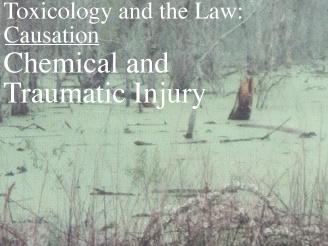Experts |
||


As obvious as it may seem, there is a big difference in our ability to directly observe a traumatic injury--someone hitting the cement and breaking an arm or leg, or being hit with a baseball and developing a lump--and the 'invisibility' of chemical injury. It's almost hard to imagine that someone can get 'hit' with a chemical exposure and end up with an injury worse than one we could see. Even more difficult to imagine are chemical injuries which may evoke little or no response at the time of exposure or for a number of days thereafter, but then develop into signficant health problems. It's so easy to conclude the person is 'faking it' (which they might be) or exaggerating. How do we really know? The invisibility of the chemical assault combined with the time lag between exposure and manifestation of injury, raises real questions about the credibility of the claimant and about the mechanism of chemical causation. Because even if we know that we usually cannot literally 'see' chemicals or the injury caused, we still hold onto the belief that 'what you see is what you get'. However subtle, this can create real obstacles in proving causation, especially since there are real and legitimte reasons to question causation. It is an uphill battle to prove causation even if it does exist and in many cases it might not.
One of the problems in determing if chemical causation does in fact exist is that it doesn't simply 'look' different from traumtic causation of injury but is in fact different. Most, although certainly not all, traumatic injury is so clearly and overwhelmingly unambiguously connected to the cause that there really is no question.
In the coming weeks we will address a number of ways to make the issues clear and to provide ways of countering them in the courtroom, as well as ways of responding to this type of approach.
